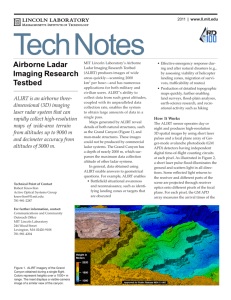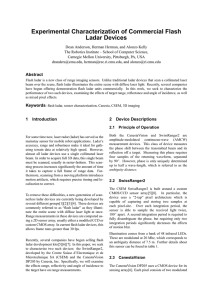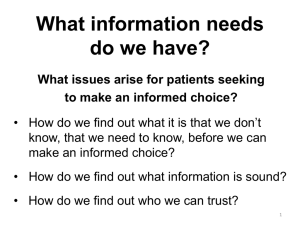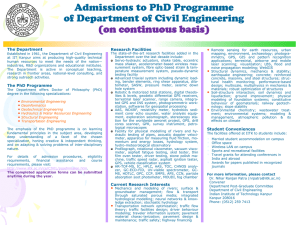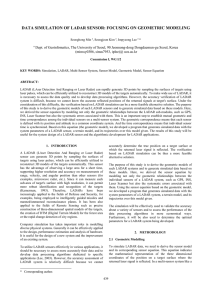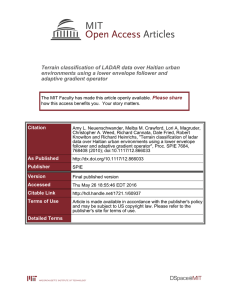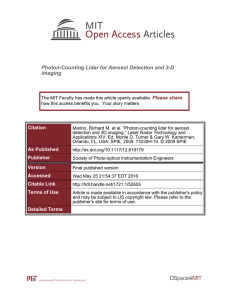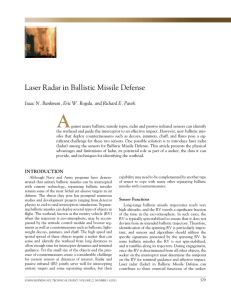LADAR
advertisement
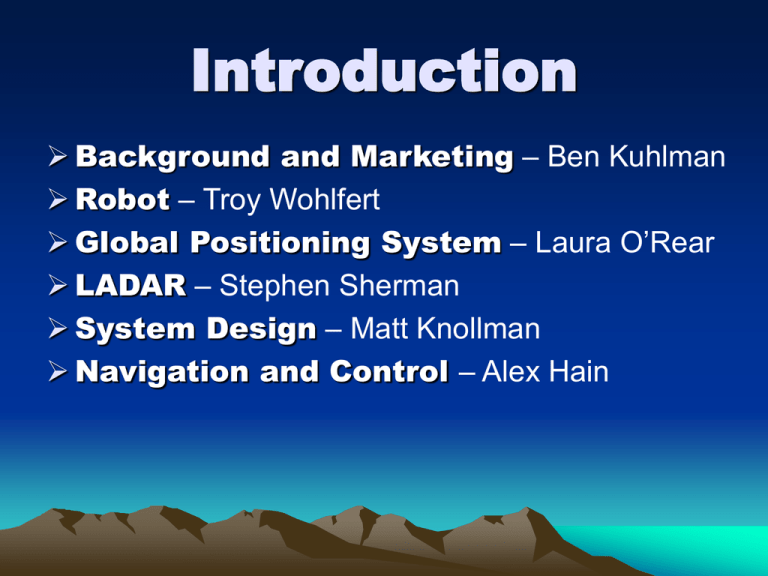
Introduction Background and Marketing – Ben Kuhlman Robot – Troy Wohlfert Global Positioning System – Laura O’Rear LADAR – Stephen Sherman System Design – Matt Knollman Navigation and Control – Alex Hain Markets for Our Product One-Third of all military vehicles by 2015 Current Military Applications Future Applications Detection, Heavy Combat, Monitoring Possible Civilian Applications Agriculture, Materials Handling, Mass Transportation, Automobile enhancement Robotics Development Current Civilian Applications AGVs, Robotic Arms, Smart Appliances. Automated Highway Systems Disappointment National Automated Highway System Consortium Challenges for the Future of Robotics Darpa Defense Advanced Research Project Agency Department of Defense Armed forces a decisive edge Grand Challenge Race between Barstow and Las Vegas $1 Million Prize Rough Terrain fencing water bushes ATRV-2 Manufactured by IRobot Off-Road capabilities 220 lbs load capacity 2 m/s maximum speed Application for Darpa Global Positioning System (GPS) How GPS Works: 24 satellites broadcast on two frequencies: L1 (1575.42 MHz), C/A code and P(Y) code L2 (1227.60 MHz), P(Y) code P(Y) code C/A code Pseudo-random Noise Contains almanac of satellite (SV) positions Contains ephemeris, SV position corrections Distance (from SV) = Velocity x Time Velocity is approx. the speed of light 3.0*108 m/sec Time is the delay needed to match pseudo-code Trilateration (for position calculation) Requires min. of 4 satellites Four equations with four unknowns www.garmin.com GPS Application NovAtel Propak-LB-L1/L2 Receiver 10 cm level accuracy, 10 Hz 30 ~ 50 sec acquire time 3.7 Watts, 7 to 15 V DC input Output 3 RS-232 serial PPS (pulse per second) Rugged design NovAtel GPS-600-LB Antenna Tracks SVs up to 15° below horizon LADAR LAser Detection And Ranging How it works ] LADAR Our Model: Sick LMS 30206 Specs Range: 80m Angular Resolution: .25o, .5o, 1o (selectable) Image Resolution: 10mm large power consumption (20~140 W) Placement Front center of ATRV angled Downward System Overview Sensor System RS-232 External Computer Control System Ethernet (Pentium M / Via C3) Onboard Computer LADAR Sensor (Pentium III) RS-232 RS-232 Onboard Motor Controller GPS Unit Motor Motor Motor Motor Sensor System Tasks Control System Tasks Data acquisition Signal processing / Filtering Map generation Path planning Integration of high and low-level sensor data Motor control Computer Hardware Sensor Computer EPIA PD 1000 – – – – 1 GHz Via C3 CPU 4 serial ports Dual Ethernet ports Small 17cm x 17cm footprint Power Supply DC-DC converter – 80 Watt output – Wide input voltage range (11-30V) Storage 512MB Compact Flash card Software Linux OS Free (GPL) Scalable and very powerful Sensor Software Use existing API to interface with LADAR Generate virtual map of environment Client / Server architecture Control Software Integrate data from LADAR and GPS Identify obstacles Generate driving path Use existing API to interface with ATRV-II GUI (Display Software) Relay robot position and LADAR map to user Use Mobility Robot Integration API Communicate with vehicle via wireless Ethernet link Navigation and Tracking GPS used for broad view LADAR used for immediate area Brute force used when GPS fails Diagram of Navigation Control Driving Check GPS s Lo s o Directi PS fG on Cha nge Adjust driving direction (GPS) Drive Continue driving in current direction while regaining signal (30-50 seconds) Check LADAR Obs tr ucti on Rotate LADAR to check for immediate way around No Go Right Yes Go around Conclusion ATRV-2 test platform GPS is used for accurate positioning LADAR is used for object avoidance Use of multiple computer systems mimics actual DARPA vehicle Robust and accurate control system Simple AI, reduced complication Questions?
